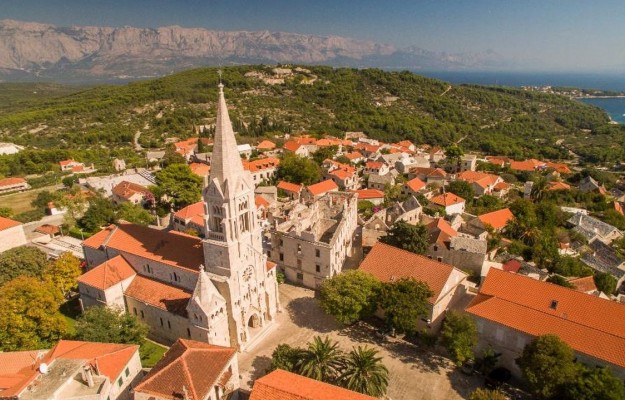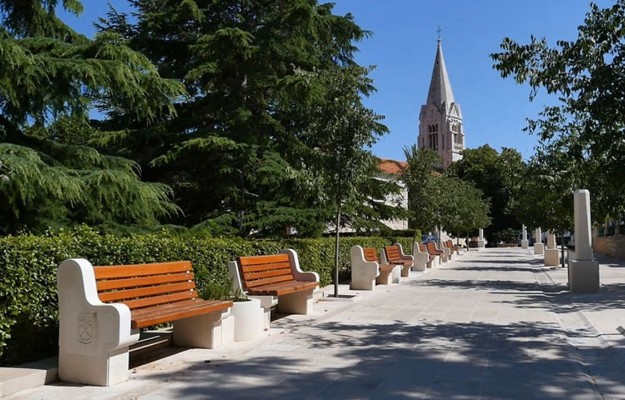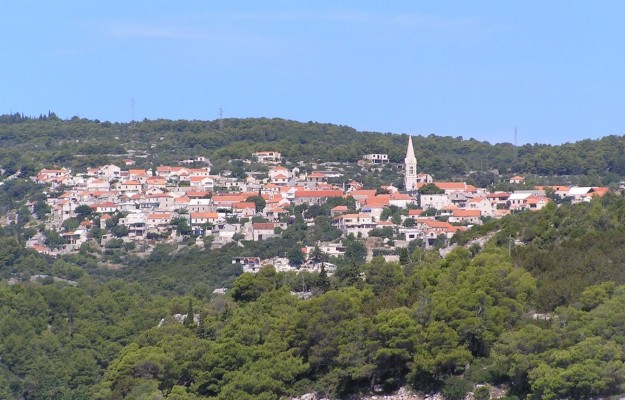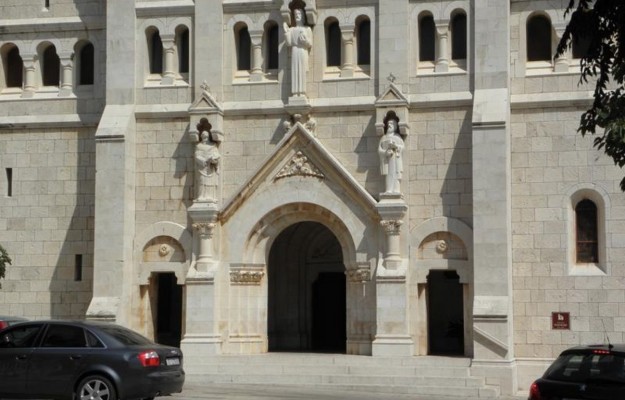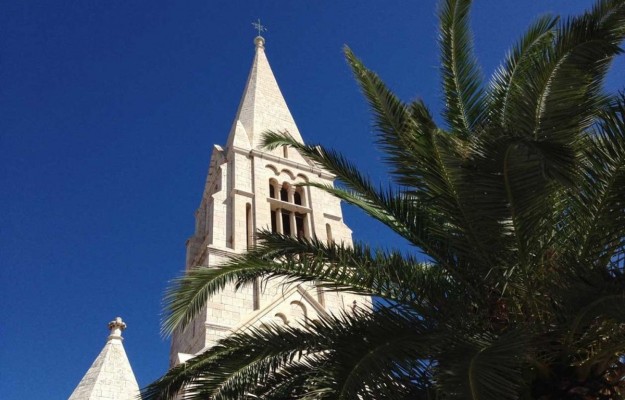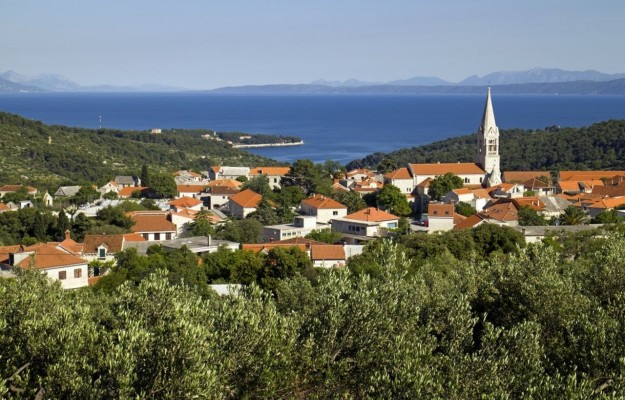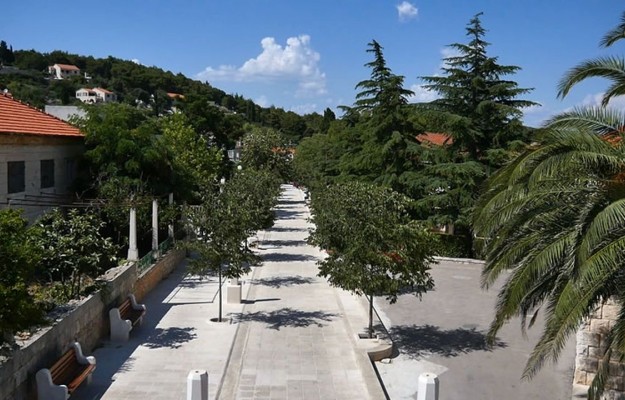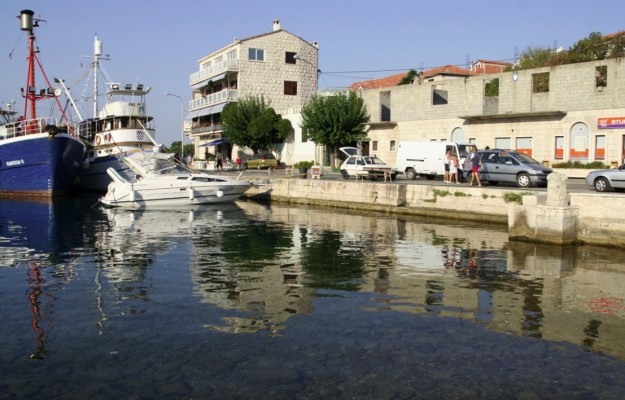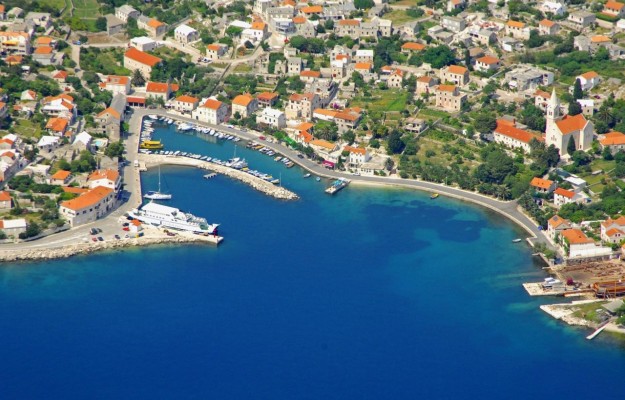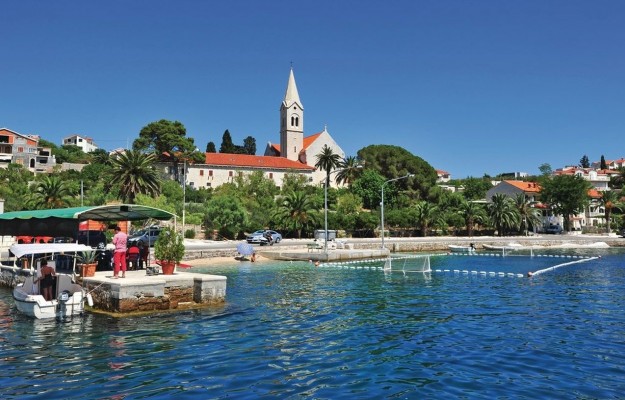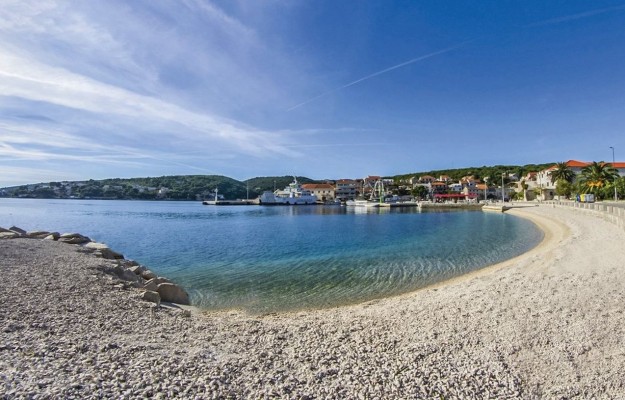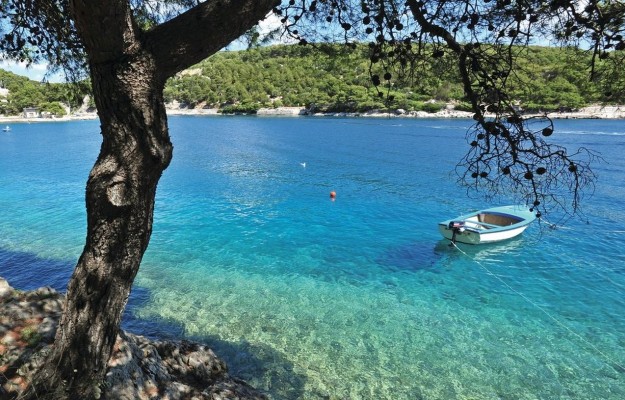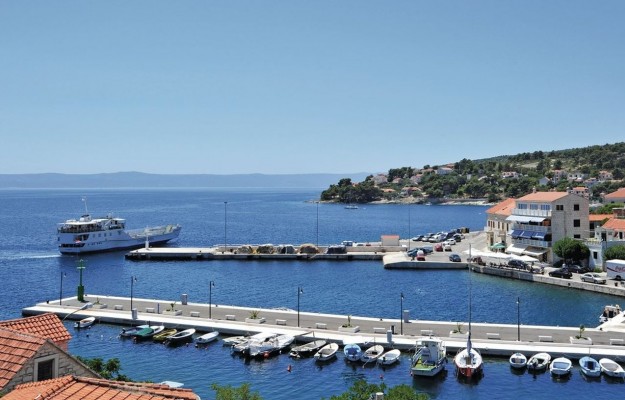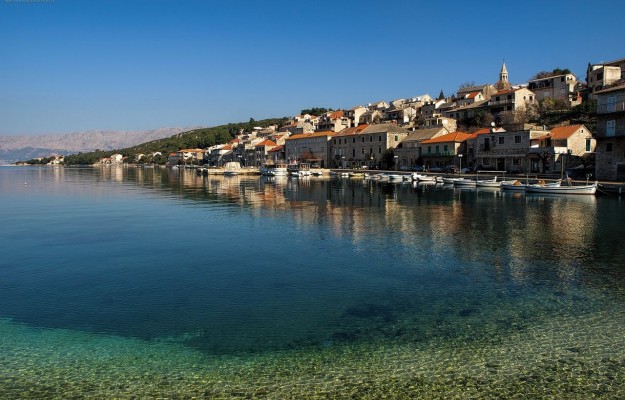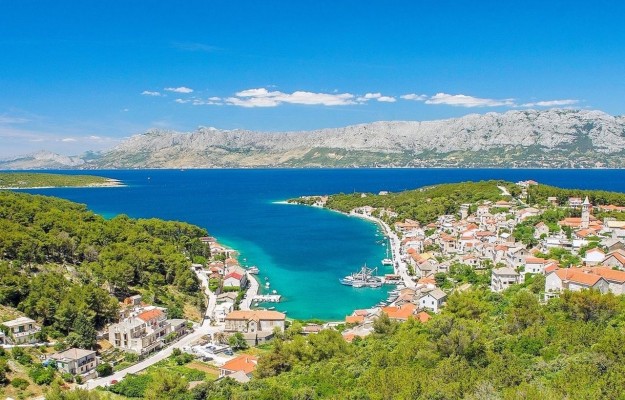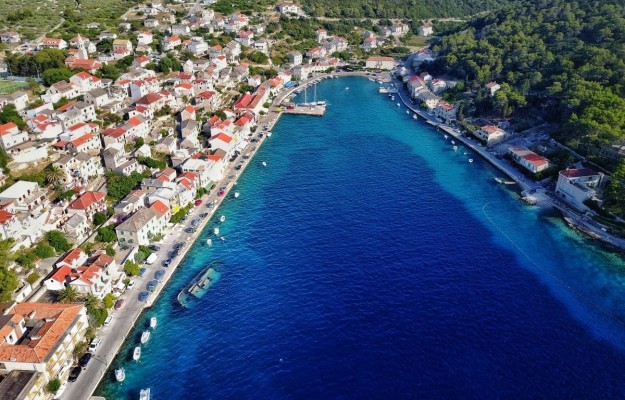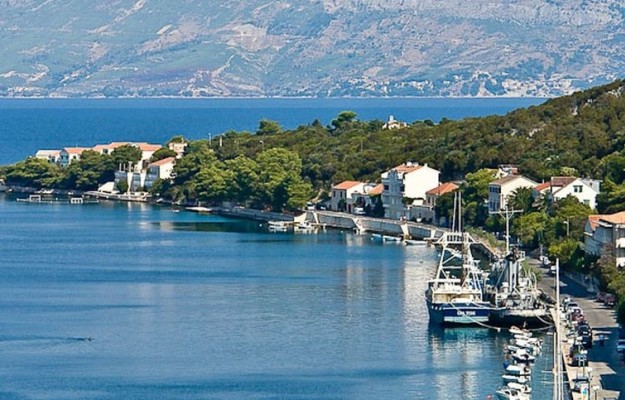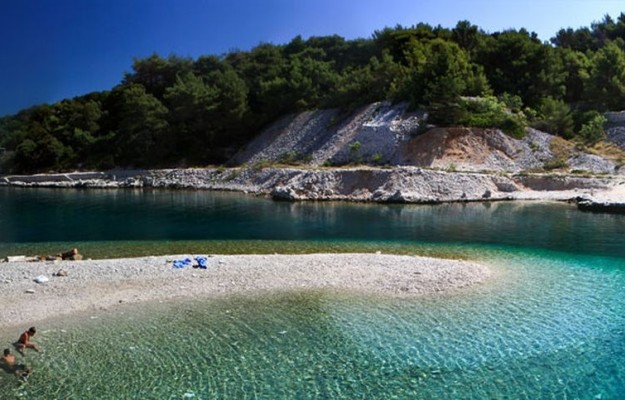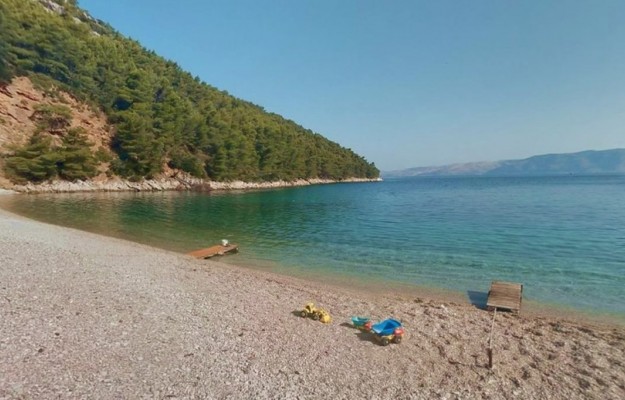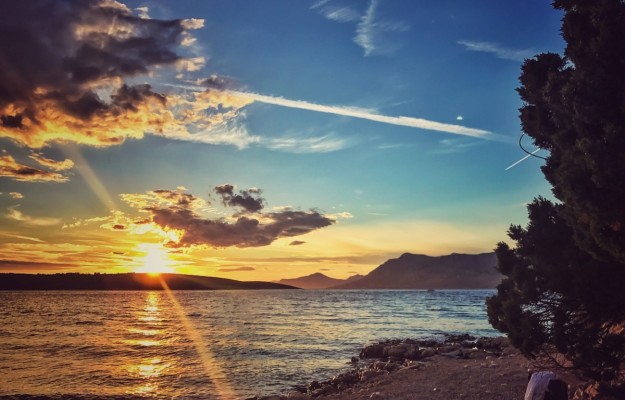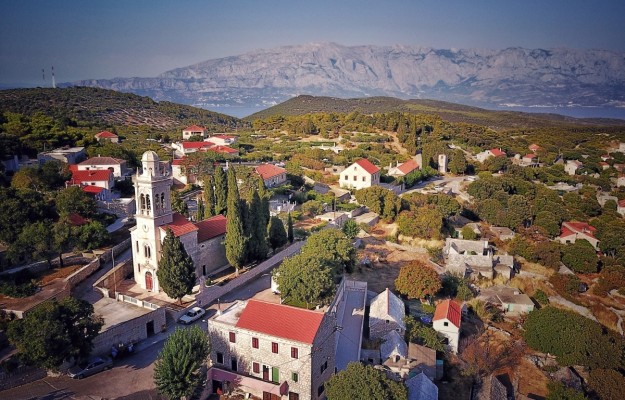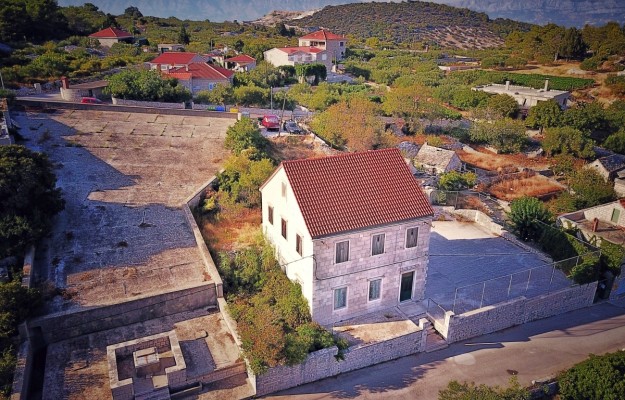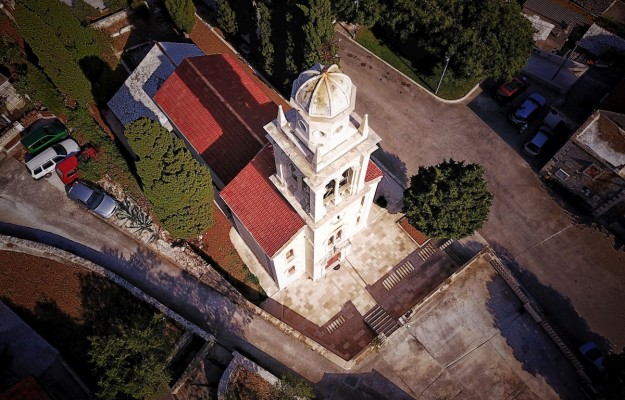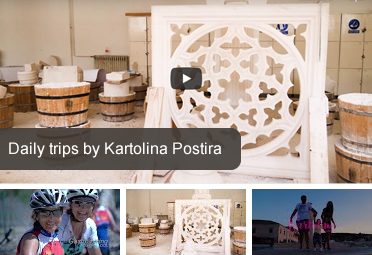Home
Accommodation ▼
ApartmentsVacation housesHotels
Daily excursions ▼
Island excursionsBoat excursionsMainland excursionsAdventure tours
School excursions ▼
Daily tripsMultiday excursions
Other services ▼
RentalsProperty ManagerPackagesTransfer
Island Brač
DestinationsBeachesRestaurantsEvents in Postira Attractions and sights
Contact
Selca
Selca - home of Brač Cathedral
Selca is the most eastern municipality of Brač, an area with a lot of unusual innovations and charm, and life-long associated with stone and stone crafts. The culture of stonework is evident at every turn, especially in numerous stone monuments.
The impressive monumental neo-Romanesque parish church of Christ the King dominates the site and because of its grandeur the islanders call it Brač Cathedral. It was built in the middle of the 20th century and the central figure is a statue of the Heart of Jesus, the work of the famous Croatian sculptor Ivan Meštrović. A monument to Pope John Paul II has been placed near the Church of Christ the King in life size.
The Church of Our Lady of Karmen is the first parish church of Selca, built at the bottom of the local square in the 18th century, which today, besides religious purposes, also occasionally has an exhibition hall.
The Stambuk Palace, called Palac, is located in the center of the town and is distinguished by its fine stone design and stone decorations. The interior was lavish and representative just like the exterior and is an exceptional example of 19th-century civic architecture. The palace suffered the greatest tragedy in the history of the place when in 1943. Italian occupiers set fire to Selca and several other surrounding settlements.
Today, Selca is known for its olive growing and tourism is slowly developing, thanks to the clean sea, idyllic nature, local food and local restaurants with rich gastronomic offer.
Sumartin is the most eastern and youngest place on the island, somewhat different from other settlements. It originated in the 17th century and the locals are most fond of sea and fishing.
The Museum of the Franciscan Monastery houses valuable Venetian Baroque canvases, a hand-made floor plan of the monastery and metal church objects.
Povlja is a small place rich in history and the site of many valuable monuments. An early Christian basilica from the 6th century with an octagonal baptistery is one of the most expansive sacral buildings of its kind in Croatia. From Benedictine monastery comes the famous Povlja Charter, one of the oldest and most important monuments written in Croatian script, today preserved in Pučišća.
Long promenades and numerous coves provide peace and refreshment from summer heat and nearby restaurants and taverns offer delicious local specialties.
Novo Selo is located between Selca and Povlja and at the entrance to the village are numerous stone sculptures. Nearby is the prehistoric hill fort Gračišće under which there were unexplored ancient wells.
USEFUL INFORMATION
Selca Tourist Board
Trg Stjepana Radića 5, 21425 Selca
Telephone: +385 (21) 648 209
E-Mail: touristboard.selca@gmail.com






